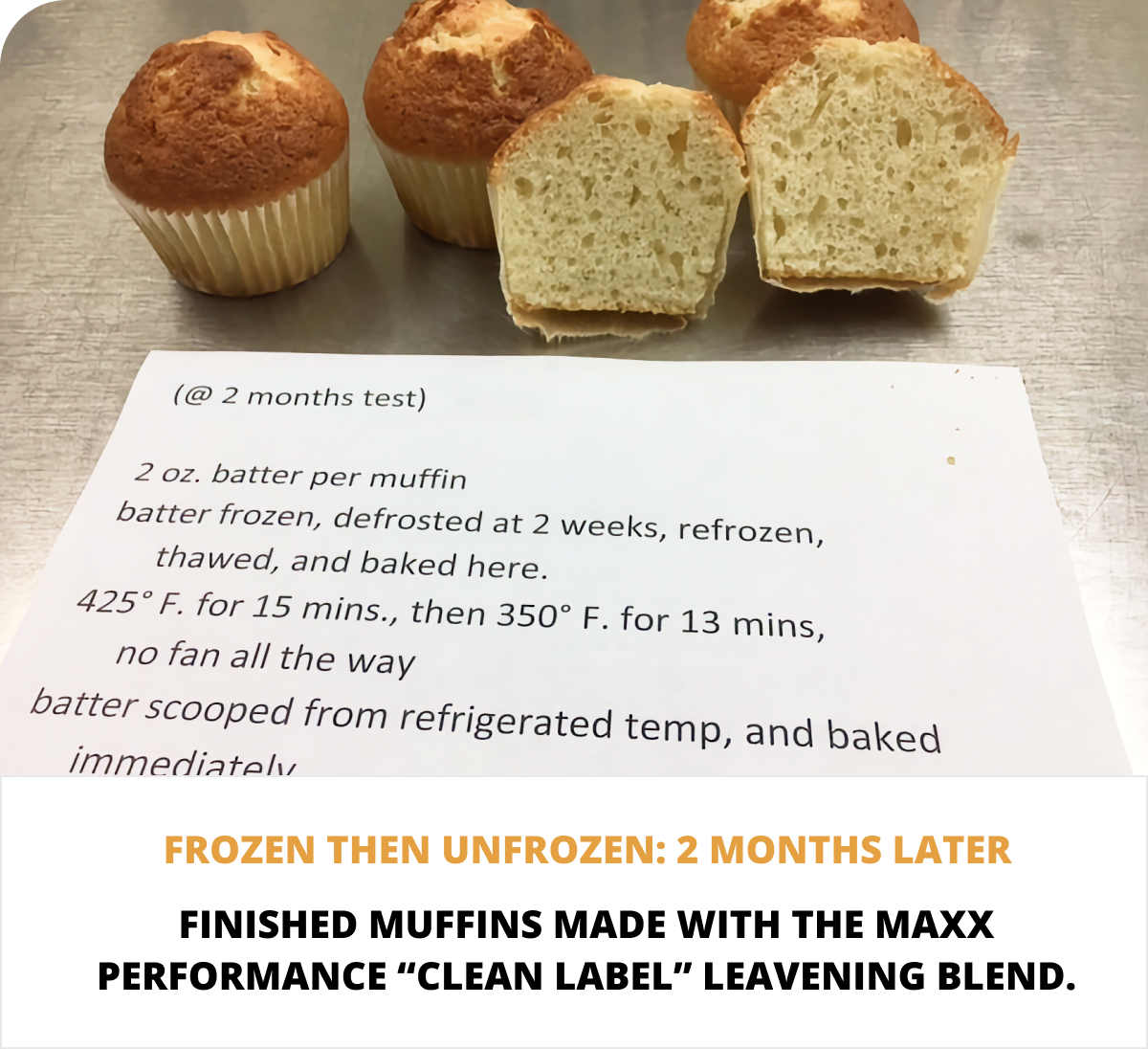Chemical leaveners often suffer from premature release and pre-reaction with other ingredients. These challenges, coupled with the bakery industry's sensitivity to factors like heat, light, moisture, pH, and protein and nutrient degradation, significantly impact product quality and consistency and hinder production efficiency and innovation.
Moreover, the demand for specialty bakery products has prompted the use of more expensive ingredients. Encapsulated leavenings, such as those used in frozen pail muffin dough, exemplify this trend. Typically, the dough undergoes overnight thawing followed by varying hours of in-store use. However, continuous gassing over time decreases quality consistency. Doughs containing encapsulated leavening agents address this issue by extending quality retention from a few hours to a full day, reducing proofing time and saving energy costs.
Versatility Across Bakery Products
According to Dr. Patricia Rayas-Duarte, Professor, Cereal Chemistry, Oklahoma State University, “The versatility of encapsulated chemical leavening agents applies to a wide variety of bakery products—even refrigerated and frozen items like biscuits and rolls.” Encapsulated baking sodas, for instance, slow down leavening reactions, preventing undesired premature contact during processing, storage, and packaging, which can lead to out-gassing and expansion. This controlled release ensures that the leavening agent is available during baking, triggered by temperature. “Encapsulated chemical leavening agents are revolutionizing the baking industry, safeguarding product quality from production to consumption, ensuring consistent texture and flavor profiles,” adds Dr. Rayas-Duarte.
Maxx Performance microencapsulation systems protect ingredients, preventing degradation and premature reaction and optimizing performance at minimal cost without altering production processes. They also deliver a bread dough with improved physical characteristics and allow for the slow release of leavening acid or base at the optimal time during baking.
Real-World Leavening Challenge
An R&D chef from a bakery company reached out to us seeking ways to improve the consistency of leavening in their frozen cake and muffin batter supplied to franchise operators nationwide. They were facing challenges due to the batter undergoing freezing, packing, transportation, thawing, and varying levels of handling before baking, resulting in inconsistent leavening.
The chef mentioned that their cake and muffin mixes already contained raw baking powder. They believed that microencapsulation could be the solution to compensate for potential leavening loss during storage and extend shelf life. Time was of the essence as the current setup was causing difficulties for franchises and financial losses for the company.
Based on this information, we sent the chef two samples of different slow-release baking soda actives to experiment with. However, preliminary results indicated that the coated leavening did not improve the baked results. Attempts with higher doses led to "brown spots," suggesting high alkaline content and undissolved coating.
Uncovering the Optimal Solution
After initial experiments with coated leavening agents yielded unsatisfactory results, our experts delved deeper and quickly uncovered a crucial finding: the high proportion of flour in the dry mix was impairing the performance of the coated leavening.
We conducted experiments with various combinations of coated sodium bicarbonates and leavening acids. We concluded that the optimal solution for the chef was a blend of coated sodium bicarbonate and coated leavening acid. Finally, we recommended adding this ingredient combination to the dry mix and blending it briefly before incorporating the wet ingredients (over-blending or using paddles could damage the coating on the active particles).
Results That Surpass Expectations
Two months passed before we received feedback. We later found out why: the new batter had been prepared months earlier, frozen, thawed for a bake test two weeks later, refrozen, and thawed again for a two-month test. And the results were impressive. The height and diameter of the muffins remained consistent at both two weeks and two months. The interior was well-leavened, the crumb resembled fresh batter, and the dome was consistently high. Additionally, our coated leavening blend required 50% less sodium, resulting in a longer-lasting, higher-quality muffin that was later relaunched with a "clean label” and a reduced sodium claim.
 Source: Maxx Performance
Source: Maxx PerformanceClean-label chemical leavening agents, such as baking soda, baking powder, and monocalcium phosphate, are used in doughs and batters to create a slow-release foaming action that lightens and softens finished products, enhancing their texture. These agents react with moisture, heat, acidity, or other triggers to produce gas, usually carbon dioxide (CO2), which is trapped within the dough. As the dough or batter is mixed, starch from the flour combines with water to form a matrix, often supported by proteins like gluten, resulting in a soft, spongy texture that everyone wants in bakery products.
| Benefits of Slow-Release Chemical Leavening Agents |
| Prevent premature leavening |
| Prevent interactions with fruit acids that cause premature leavening and color bleeding during thawing |
| Increase shelf life |
| Provide consistent leavening following freeze-thaw abuse |
| Allow for more sustained leavening action |
| Prevent dough discoloration during storage |
| Typical Applications for Encapsulated Leavening |
| Rising crust pizza |
| Refrigerated pizza |
| Frozen and refrigerated dough |
| Frozen biscuit dough |
| Scoop and bake frozen biscuits and muffins |
| Canned refrigerated dough |
| Dry mix |






